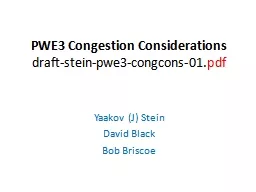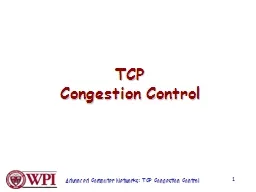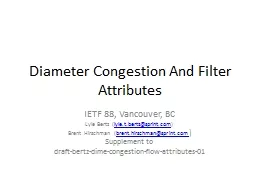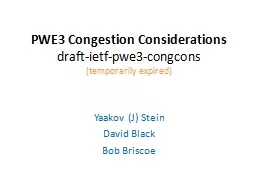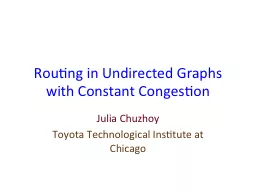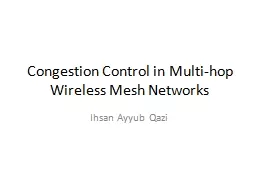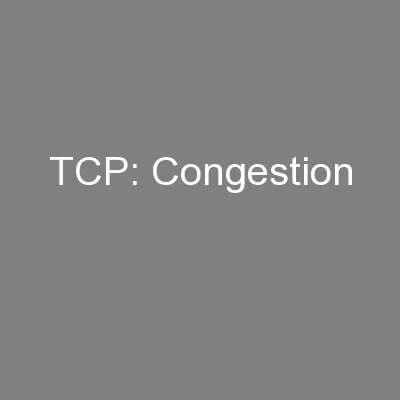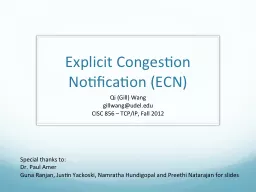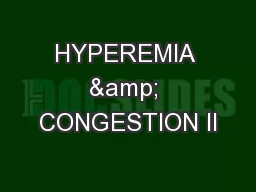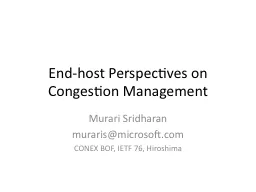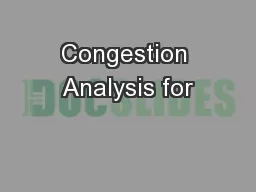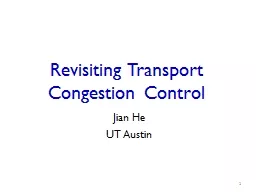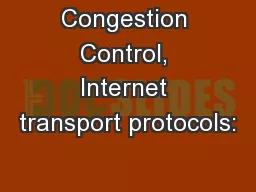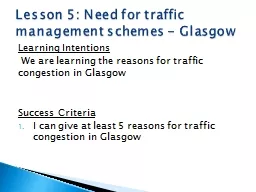PPT-PWE3 Congestion Considerations
Author : marina-yarberry | Published Date : 2016-03-07
draftsteinpwe3congcons01 pdf Yaakov J Stein David Black Bob Briscoe PW congestion as seen by PWE3 PWE3 was originally in the transport area because handling the
Presentation Embed Code
Download Presentation
Download Presentation The PPT/PDF document "PWE3 Congestion Considerations" is the property of its rightful owner. Permission is granted to download and print the materials on this website for personal, non-commercial use only, and to display it on your personal computer provided you do not modify the materials and that you retain all copyright notices contained in the materials. By downloading content from our website, you accept the terms of this agreement.
PWE3 Congestion Considerations: Transcript
Download Rules Of Document
"PWE3 Congestion Considerations"The content belongs to its owner. You may download and print it for personal use, without modification, and keep all copyright notices. By downloading, you agree to these terms.
Related Documents

